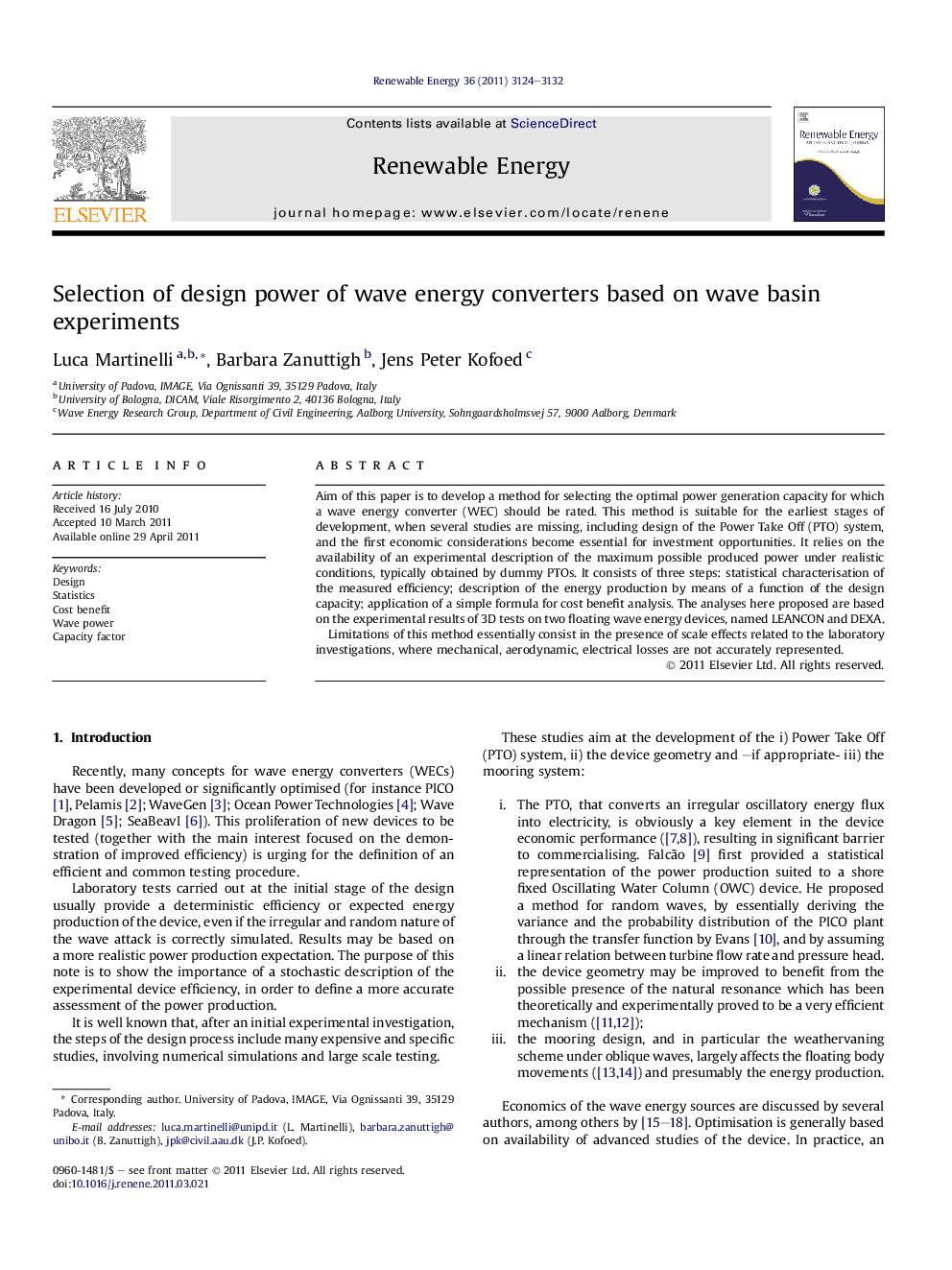| Article ID | Journal | Published Year | Pages | File Type |
|---|---|---|---|---|
| 301354 | Renewable Energy | 2011 | 9 Pages |
Aim of this paper is to develop a method for selecting the optimal power generation capacity for which a wave energy converter (WEC) should be rated. This method is suitable for the earliest stages of development, when several studies are missing, including design of the Power Take Off (PTO) system, and the first economic considerations become essential for investment opportunities. It relies on the availability of an experimental description of the maximum possible produced power under realistic conditions, typically obtained by dummy PTOs. It consists of three steps: statistical characterisation of the measured efficiency; description of the energy production by means of a function of the design capacity; application of a simple formula for cost benefit analysis. The analyses here proposed are based on the experimental results of 3D tests on two floating wave energy devices, named LEANCON and DEXA.Limitations of this method essentially consist in the presence of scale effects related to the laboratory investigations, where mechanical, aerodynamic, electrical losses are not accurately represented.
► Method for selecting the design power generation capacity of WEC. ► Input includes WEC performance measured on a model with a dummy PTO under irregular waves. ► Applications concern DEXA and LEANCON devices. ► Optimal reted power is lower than annual maximum per year and higher than average. ► Limitations are due to scale and model effects of laboratory investigation.
